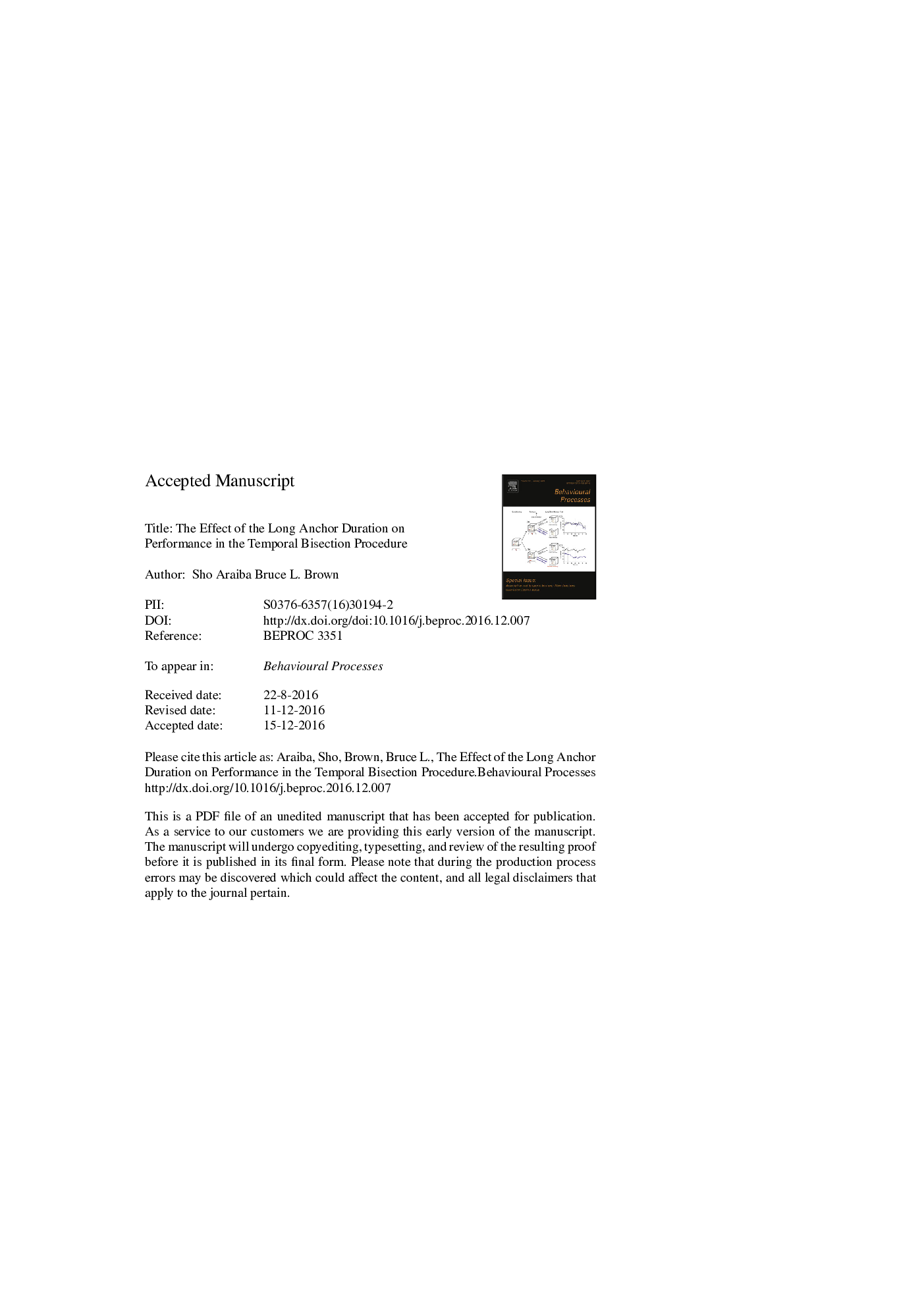| Article ID | Journal | Published Year | Pages | File Type |
|---|---|---|---|---|
| 5539702 | Behavioural Processes | 2017 | 47 Pages |
Abstract
The present study investigated how the value of the long anchor duration influences the bisection point (BP) in the temporal bisection procedure. The ratio similarity rule (Gibbon, 1981, On the form and location of the psychometric bisection function for time. Journal of Mathematical Psychology, 24(1), 58-87) hypothesizes that the location of the BP is determined by a ratio comparison between the short and long anchor durations. The Short/no short hypothesis (Machado and Keen, 2003, Temporal discrimination in a long operant chamber. Behavioural Processes, 62(1), 157-182) indicates that the location of the BP is influenced mainly by the short duration. Two experiments with pigeons manipulated the long anchor duration while fixing the short anchor duration in a series of anchor pairs. The results showed that the location of the BP depended on the initial training condition, a primacy effect. When the initial training condition used anchors of 3- vs. 9-s, a relatively strong influence of the long anchor duration was observed as predicted by the ratio similarity rule. On the other hand, when anchors were 3- vs. 27-s in the initial training condition, the effect of the long duration was relatively small, conforming more closely to the Short/no short hypothesis. Keypecking to the sample key during a trial, sample-cue responding, was also observed. The functions relating sample-cue responding to elapsed trial time also indicated the primacy effect.
Keywords
Related Topics
Life Sciences
Agricultural and Biological Sciences
Animal Science and Zoology
Authors
Sho Araiba, Bruce L. Brown,
